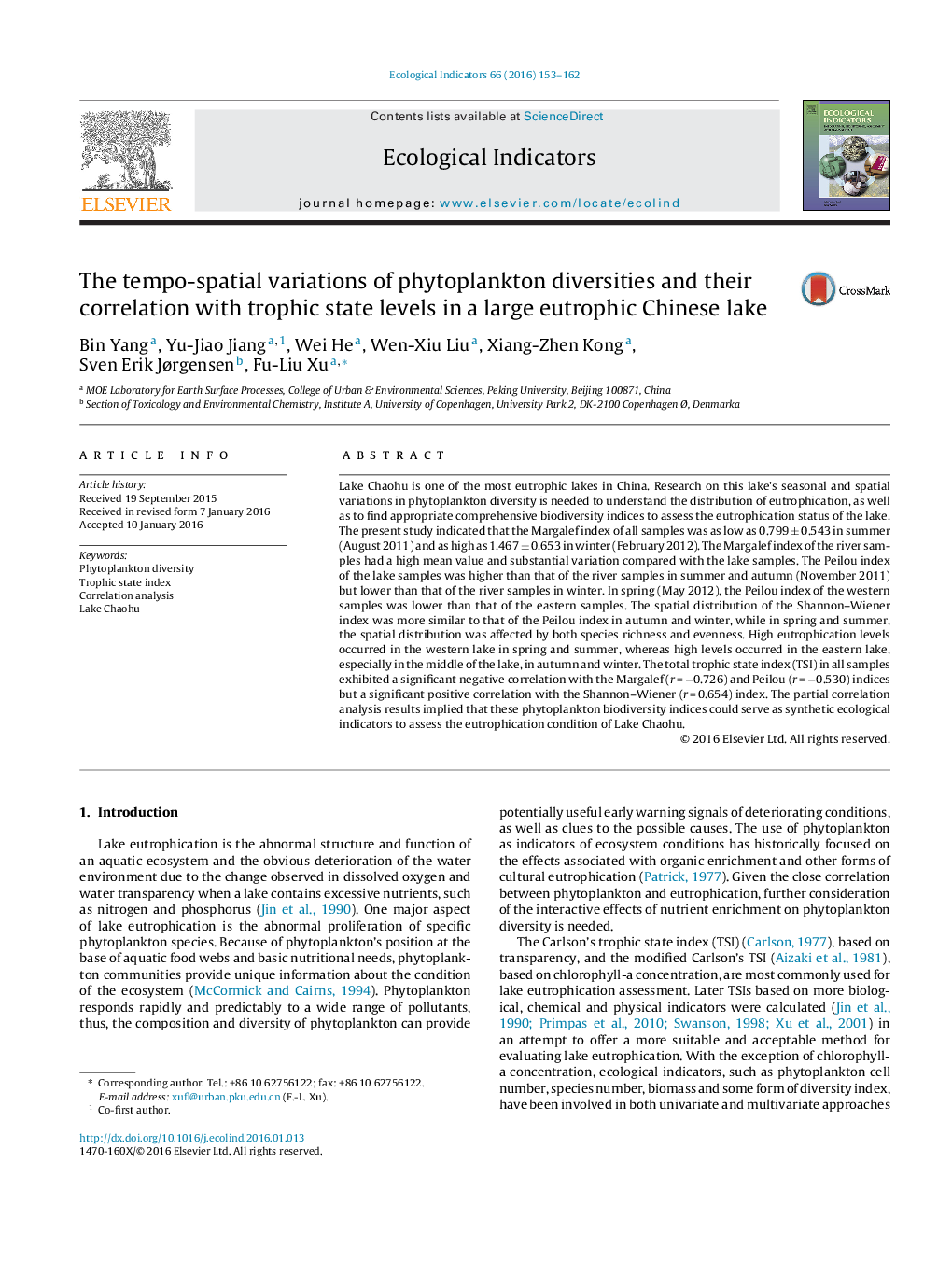| Article ID | Journal | Published Year | Pages | File Type |
|---|---|---|---|---|
| 6293422 | Ecological Indicators | 2016 | 10 Pages |
Abstract
Lake Chaohu is one of the most eutrophic lakes in China. Research on this lake's seasonal and spatial variations in phytoplankton diversity is needed to understand the distribution of eutrophication, as well as to find appropriate comprehensive biodiversity indices to assess the eutrophication status of the lake. The present study indicated that the Margalef index of all samples was as low as 0.799 ± 0.543 in summer (August 2011) and as high as 1.467 ± 0.653 in winter (February 2012). The Margalef index of the river samples had a high mean value and substantial variation compared with the lake samples. The Peilou index of the lake samples was higher than that of the river samples in summer and autumn (November 2011) but lower than that of the river samples in winter. In spring (May 2012), the Peilou index of the western samples was lower than that of the eastern samples. The spatial distribution of the Shannon-Wiener index was more similar to that of the Peilou index in autumn and winter, while in spring and summer, the spatial distribution was affected by both species richness and evenness. High eutrophication levels occurred in the western lake in spring and summer, whereas high levels occurred in the eastern lake, especially in the middle of the lake, in autumn and winter. The total trophic state index (TSI) in all samples exhibited a significant negative correlation with the Margalef (r = â0.726) and Peilou (r = â0.530) indices but a significant positive correlation with the Shannon-Wiener (r = 0.654) index. The partial correlation analysis results implied that these phytoplankton biodiversity indices could serve as synthetic ecological indicators to assess the eutrophication condition of Lake Chaohu.
Related Topics
Life Sciences
Agricultural and Biological Sciences
Ecology, Evolution, Behavior and Systematics
Authors
Bin Yang, Yu-Jiao Jiang, Wei He, Wen-Xiu Liu, Xiang-Zhen Kong, Sven Erik Jørgensen, Fu-Liu Xu,
